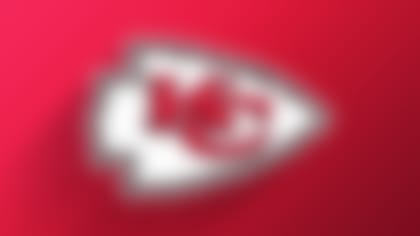NFL Media's Albert Breer touches on multiple topics in his robust Inside the NFL Notebook, including (click on each link to go directly to the topic):
» A major factor behind the Eagles' success in Chip Kelly's debut season.
» When will Rob Gronkowski's contract become a problem in New England?
» One small-school stud who's reminiscent of Von Miller and could be a top-10 draft pick.
» And much more, beginning with a look at one team that has persevered through unique adversity ...
The "Today" and "Good Morning America" satellite trucks might be gone, but two months later, the Miami Dolphins remain relevant.
And this time, it's for better reasons.
A little less than eight weeks after the infamous dining-hall dustup, a team that then seemed on the brink of implosion is now closing in on the franchise's first playoff berth in a half-decade -- and can, with a win on Sunday in Buffalo, lock down the club's second plus-.500 season in eight years.
What's really interesting, though, is how these Dolphins got here: by not really changing much of anything.
"One of the things we talked about at our first meeting in camp was that one of the expectations of a Miami Dolphin was to be a pro, on and off the field," head coach Joe Philbin said after Wednesday's practice. "Underneath that, you want to try to be the same guy every day, the kind who puts in an honest day's work. That's the type of guy we're looking for -- not a guy who's up and down, guys that are consistent. That's No. 1. And No. 2, we never lost faith in what we have here.
"We knew we had good guys with good character. We're not perfect, but we never lost faith that we had that character."
Truth is, plenty of factors have played into Miami getting from 3-4 to 8-6, but to those inside the building in Davie, Philbin's steady-handed leadership is the most significant. The head coach believed in his plan, and those around him followed it, no matter the circumstances.
One Dolphins staffer says it's been, "Not straying from his beliefs, not making any wholesale changes, being consistent with the players. They've seen the same game the whole time, nothing phony. There's never been a sense of panic, and players recognize that. It's like the saying, 'You say it best when you say nothing at all'." Another staffer said, "(Philbin's) rock solid, consistent, good or bad. He communicates and reinforces his message. No fanfare, and guys know where they stand."
Silver: From zero to hero in Miami

So how did he address the tornado forming in the Dolphins' backyard? Simple: He gathered the team and asked players to tell the truth and stick up for themselves. And from there, Miami continued with the plan it had started on at the outset of training camp.
The focus barely veered from football at all, and that's probably why the Dolphins kept getting better at, well, football -- with a close loss to Carolina standing as their only blemish since Veteran's Day.
Additional factors playing into Miami's rise? Philbin says that, on offense, players are breaking more tackles, and the defense has shown marked improvement in the red zone, evident in last Sunday's win over New England. Also, there's the individual growth of guys like Ryan Tannehill, Brian Hartline and Cameron Wake, typically quieter types who revealed their leadership through the tumult.
And there's the no-nonsense ethos the team has drawn from the coach's personality. This excuse-free approach has helped the players ride out injury losses -- and that's where GM Jeff Ireland's down-the-roster work has shown up, as well. When the Dolphins lost tight end Dustin Keller in the preseason, former sixth-round pick Charles Clay was ready to go. Receiver Brandon Gibson went down, and 2012 seventh-rounder Rishard Matthews stepped in. Cornerback Dimitri Patterson got hurt, and another seventh-rounder, Jimmy Wilson, filled a role. On the offensive line, undrafted free-agent Sam Brenner has taken Richie Incognito's spot, and Bryant McKinnie, acquired via trade in October, is now doing Jonathan Martin's job.
"People thought it was chaos, but in reality, we didn't let anything affect us," said second-year defensive end Olivier Vernon, who's broken out with 11.5 sacks. "We stuck to what we've been doing, and that's playing. Just play ball, and get wins, and everything else will fade away, and we'll be recognized as a good football team."
That much was announced emphatically to the football-watching public over the last five minutes of Sunday's game against the Patriots, a team the Dolphins hadn't beaten since Tannehill's redshirt sophomore year as a Texas A&M receiver. In that time, the Dolphins' precocious franchise quarterback guided a nine-play, 60-yard touchdown drive to put Miami on top 24-20. Minutes later, faced with Tom Brady in the red zone and seconds to go, the defense made that stand up, forcing four straight incompletions by the Patriot icon before picking off a pass in the end zone to ice the game.
Next up: paying a visit to the Bills -- who beat the Dolphins in Miami in October -- before a home finale against the Jets. If the Dolphins can do what they've done over the last two months -- block out the noise and take care of business -- they'll be back in the playoffs. The players believe this would be the ultimate tribute to their leader.
"It's Coach Philbin, man," center Mike Pouncey said. "The way he responded to all this, guys looked at him, and took what he said, and followed his way. It's paid off. He's done a phenomenal job of blocking out the distractions in doing his job, and limiting the distractions for his players."
As such, Philbin has warned his players about the potential for a trap this week, coming off the New England win, and worked to keep their focus forward. And as for the bigger picture, he points to a simple message on a board that confronts players as they leave work each day: "24-7-365. We're All Accountable."
The idea, all along, has been to have the team playing its best at this time of year. Through that accountability, it appears that mission is being accomplished.
"The guys stuck together, they didn't point fingers, they just kept coming to work and wanted to get better and represent the Miami Dolphins the right way," Philbin said. "It's not something we didn't do before, but that's what our responsibility is. And the staff kept coaching, and working with the players, and the players kept playing."
And because of that, the Dolphins haven't stopped improving.
Six ways the NFL plans to sell the stadium experience
Billick: Playoff format needs change

With controversy on the horizon, Brian Billick says it's time to reconsider the NFL's flawed postseason structure. **READ**
All it takes is a TV and a set of eyes to get a real-life look at a real problem for the thriving NFL in 2013: a rash of empty seats that's only grown more noticeable as the season has worn on.
Rest assured, even as clubs continue to announce misleading attendance numbers, the league is acutely aware of barren sections in its stadiums. This is indicative of a larger problem that's been a flash-point topic in meetings for a few years now: that the quality of the home product has created good reason for the most ardent fans to stay home.
League sources say the problem has become more defined with the growth of the secondary market, which has given season-ticket holders an avenue to dump tickets that, in the end, are often going unused. Then there are the traditional no-shows -- and in places like FedEx Field and the Georgia Dome of late, it's been pretty clear there are plenty of those.
So here are six ways the league plans to address the issue with its clubs:
Pushing video boards: This process is well underway, but it's not just installing new, larger boards, and getting more of them in the stadium; it's also programming them correctly. That means fantasy stats, and it means RedZone Channel, and it means breaking old norms to make sure the guy in Section 110 isn't missing anything by leaving the couch.
Improving connectivity: It's expensive and complicated for clubs to pull this off, particularly in older stadiums, but it's absolutely, positively necessary, and will allow more programming through smartphones.
Alternative programming: The beginning of it is the locker-room footage you're seeing on video boards already, with the idea being to provide content unavailable outside the stadium. There's more coming during dead time, too, perhaps in the form of concerts and/or more sophisticated non-NFL news updates (Ryder Cup, MLB playoffs, etc.).
Redesigning stadiums: This is the most challenging of the ideas for those in existing stadiums. League folks believe standing room is more attractive for younger fans, so they want more open spaces in venues to create a sports-bar-type atmosphere, even if it's at the expense of seats.
The modular stadium: This is specific to new construction, of course. AT&T Stadium in Arlington, Texas, is one example, and Levi's Stadium in Santa Clara, Calif., will be another -- structures that expand and retract capacity based on the event, to ensure that atmosphere isn't compromised because supply outweighs demand.
Creating a full-day experience: This is a matter of making sure the clubs are keeping up with the home experience. Teams have been asked to open gates early and play out-of-market games on their boards. Soon, too, it's expected there will be video boards in stadium parking lots, so tailgaters can watch games. And those elements might extend to postgame, so fans have an option to avoid missing other games while stuck in traffic.
Numbers show that NFL clubs sold 96 percent of their tickets in 2012, and the league says figures actually improved this year, both by that sales metric and at the turnstile. But Vice President of Club Business Development Brian LaFemina says, "Clearly, it's something we've had our eye on for a while, because, as the television product is getting better, the stadium experience has to get better. We take it very seriously."
As a result, you'll see differences in the next wave of stadiums. The 49ers' Levi's Stadium, for example, will open next year with pavilions in the corners of the stadium, and capacity will be able to go from 69,000 to 75,000. Also, numbers show 90-95 percent of the Niners' season-ticket holders have smartphones, and that their fans, on average, spend $1,000 on technology every 18 months. So the franchise looks to develop a program that will allow fans to manage door-to-door trips to the stadium through their phones, thus personalizing the game day experience. Rather than go crazy with the hardware (like the Cowboys did with their massive scoreboard), the 49ers plan to focus more on software, because this will allow the stadium to adapt to future trends.
The Vikings' new venue, scheduled for a 2016 opening, also will feature large open spaces, as well as a fantasy football lounge, an adjacent plaza/park for pregame festivities and capacity flexibility from 65,000 to 73,000.
Meanwhile, Jacksonville is retrofitting its stadium with pavilions and a fantasy lounge, New England has been relentless in renovation (with new pavilions just approved), Houston has been aggressive in programming (concerts have been built in), and Kansas City and Baltimore have excelled in game presentation. All these clubs, of course, know well the stiff competition they face.
"We're competing with ourselves," LaFemina said. "And that means competing against the best television product that's ever existed in sports."
Philly's secret? A clean bill of health
At this time of year, injuries are a problem for just about every team, and that's why the Eagles' situation prior to last Sunday's loss in Minnesota really stood out.
Philadelphia listed just four players on its injury report: two as probable, two as doubtful. The club also has just five players on injured reserve, with the most prominent being free-agent-to-be Jeremy Maclin.
"To be this late in the season, you don't see guys in the training room with nagging injuries," veteran linebacker DeMeco Ryans said. "Everyone's fresh, and we're not going through it having to worry about who's hurt this week, and who has to play. We've just been blessed to stay away from major injuries. Most of the time, this time of the year, teams are just trying to hold on, and saying, 'Let's just push through and make it there.' We're not worried about that. It feels like guys are getting stronger."
Ask the players, and they'll tell you it's not an accident.
Chip Kelly and Eagles staffers have been coy about the specifics of the program, but there's little question that sports science coordinator Shaun Huls and his group have made a difference for Philly. Ryans said that slight adjustments in his diet have him feeling like it's the middle of season, not the end.
And there might not be a player who's benefitted more than the team's MVP, LeSean McCoy. The NFL's leading rusher told me that, thanks to the program, he's stayed in a four-pound range (210 to 213) all year long, and has been able to manage punishment as an every-down back. With two games to go, he's four carries away from a career-high -- averaging 19.2 carries and 22.4 touches per game -- and no worse for the wear.
"I feel good, this being the most carries I've ever had in a season, the most production, I feel really good," McCoy said. "It's the way that we practice, and all the sports science stuff (Huls) has for us, it's really paying off. ... And the energy level of all the players, when everybody's practicing on the same level? You go out, and production-wise, you're together, and it makes a difference. Being healthy, it lets you prepare better. I believe it."
The players say that it's not that Huls' methods are overly innovative. It's more, in their words, about the level of detail and emphasis put on it, whether it's in the area of recovery, nutrition, hydration, conditioning, strength training or sleep. Also, the Eagles set up their week a bit differently than most other teams, with the off day coming on Monday and the team having conditioning on Saturday.
Ryans, an eighth-year vet, says, "All the other teams, you see guys beat up and just hanging on. I've never been this late in the season saying how good I'm feeling." Ryans and others admit that they were a little skeptical coming in. But Kelly and his staff always explain things logically -- giving players the why along with the what -- and the results have led to strong buy-in.
"There's no voodoo, no hologram bracelets," offensive guard Evan Mathis said. "What it comes down to it, most of it is common-sense stuff. But they tell you if you really focus on it, you'll be OK. They put a lot of time into gathering data, they see guys, and early on, there was some trial-and-error. But it's evolved, not just for the team, but since each guy's different, it's individually changing, too."
Philly had won five straight before enduring what they hope was a blip on the radar last week in Minnesota. And the hope has to be that all this will manifest itself against the Bears and Cowboys over the next two weeks.
Four downs
1) Gronkonomics. Just after the regular season ends, Rob Gronkowski will go under the knife and have his right ACL reconstructed, marking his seventh surgery (four forearm procedures, plus work on his ankle, back and knee) in less than two years. If all goes well -- and based on history, that's a significant "if" -- he should be ready, he's been told, for Week 1 of the 2014 season. And if he's there, it'll obviously be in a Patriots uniform. But the longer-range future raises more questions about just how long Gronk will be in New England. Over the next two years, the numbers rise: in base salary, from six figures to $3.75 million ('14) and $4.75 million ('15); and in cap dollars, from the $2 million range to $5.6 million and $6.6 million. Those are manageable, and worth the risk for a player of Gronkowski's ability. After that, decision time comes. A $10 million option bonus is due after the 2015 season. At that point, Gronkowski's cap number goes to $9.02 million, and his per-year average jumps from $4.55 million (2012-15) to $9.24 million (2016-19). Now, if Gronkowski plays in 32 games the next two years and regains his All-Pro form, the call is academic for New England. But if there are more health problems? Then, things get interesting ...
2) Lions pinned in. It'd be pretty tough for the current Detroit administration to explain its season ending on December 29, given the circumstances. Jim Schwartz and Matthew Stafford have spent five years together. Calvin Johnson and Ndamukong Suh are in the prime of their respective careers. And the Lions loosened the purse strings in the offseason for free agents like Reggie Bush and Glover Quin. So given all of that, and the quarterback situations of their three division rivals (significant injuries in Chicago and Green Bay, a mess in Minnesota), there's very little reason for Detroit not to break through this time around. This makes the next two weeks critical ones for the franchise. GM Martin Mayhew and Schwartz have done an admirable job picking the team up off the canvas after the cataclysmic Matt Millen era, but it's hard to envision anything less than a sweep of the team's last two games, against the Giants and Vikings, being enough to prevent major changes. One thing that should be mentioned here, too: Stafford, Johnson and Suh combine for about $50.2 million in cap space in 2014 and $51.5 million in '15, the final two years of Suh's rookie deal.
3) Big spot for the Panthers. Carolina's done an incredible job just getting to this point -- carrying 10 wins into a Week 16 home showdown with the Saints -- and there's no doubt that the defense is at the center of this rise. Luke Kuechly has become the game's preeminent middle linebacker. Meanwhile, GM Dave Gettleman got off to a fine start in his first draft with the franchise, infusing the D-line with a pair of hulking interior presences (Star Lotulelei and Kawann Short). Still, to those around the league, it's Cam Newton's improvement that really stands out. His numbers (62.3 percent passing, 3,049 yards, 21 TDs, 11 INTs, 89.6 passer rating) don't necessarily reflect it, but the tape does. "He's better all around," an AFC personnel executive said. "Decision-making, how he moves the team, third down, maturity. He's not seeing it for the first time anymore, and his distribution has been good. Having a very good D helps, too."
4) One huge key to Rivers' renaissance. There wasn't a whole lot of publicity around Darren Sproles' departure from the Chargers three offseasons ago, but there was one awfully disappointed quarterback in San Diego. Philip Rivers lobbied the club to keep the diminutive gadget player back then, and after Sproles was poached by the Saints, it wasn't hard to find evidence on how it hurt the guy taking snaps. After three straight seasons with a plus-100 passer rating, Rivers' number dipped under 90 in 2011 for just the second time in his career as a starter -- and this happened again in 2012. So the Chargers signed a reasonably similar player this offseason, Danny Woodhead. And just like that ... Rivers is back. It's not the only reason for the rebound, of course, but it is an important one. Like Sproles, Woodhead gives Rivers a weapon underneath who can create and get first downs on his own, preventing Rivers from having to force throws downfield, something Mike McCoy looks to avoid. And also like Sproles, Woodhead is also a good pass blocker. That's a hard quality to find in those smaller types, and it gives Rivers a higher level of comfort against the blitz. A signing like Woodhead's will never grab headlines, but the effect it's had on Rivers is immense.
Three checkdowns
1) For as long as it remains open, the University of Texas job is sure to loom in the background of the NFL coaching carousel. The reason why stars like Nick Saban, Jon Gruden and Jim Harbaugh come up? The UT job is considered by those in coaching as one of the industry's five best, regardless of level.
2)San Diego's win over Denver is just the latest example of coaches and GMs getting over on their ex-players, with Tom Telesco and Mike McCoy both having extensive experience with Peyton Manning. One for this week that's played out the last couple years: Ex-Pats (and current Ravens) defensive coordinator Dean Pees vs. Tom Brady.
3) Under-the-radar name to keep an eye on for January: Vanderbilt coach James Franklin. He's done more with less in Nashville, is someone who relates to all types of people, and has garnered respect in NFL scouting circles. Not to mention, he worked for a year as a Packers assistant back in 2005.
Two college players to watch Saturday
1) Fresno State QB Derek Carr (vs. USC in the Las Vegas Bowl, 3:30 p.m. ET, ABC): The younger brother of ex-Texan bust David Carr has thrown for an astonishing 4,866 yards and 48 touchdowns (to just seven interceptions) in 12 games. As a third-year starter for the Bulldogs, Carr has received a closer look this fall from NFL folks. "Good arm, accurate, quick release, but he's not in a pro offense," one AFC general manager said. "He's at a lower level of competition, and he needs to develop better awareness, anticipation and pocket presence. He can help himself in the bowl game and Senior Bowl." An NFC personnel executive added, "I like him, but he's not a first-round talent. His athletic ability and arm strength ... he's just not dynamic." Still, with the 2014 quarterback class shaping up to be a little less stout than anticipated, there's an opening for players like Carr to boost their stock. And after spending the last two seasons in the Mountain West, showing up big against a school like USC would be an awfully good place to start that effort.
2) Buffalo LB Khalil Mack (vs. San Diego State in the Famous Idaho Potato Bowl, 5:30 p.m. ET, ESPN): On the season, Mack has 94 total tackles, 19 tackles for loss and 10.5 sacks. And he posted 2.5 sacks and a pick-six against Ohio State, so the numbers can't be chalked up solely to underwhelming competition. "He's one of the top pass rushers in the draft," an AFC college scouting director said. "He played his best games against the biggest opponents, and can be an (outside linebacker) in a 3-4 or a Sam (linebacker) in a 4-3. ... He's proven (what kind of player) he is." The college director compared Mack to Von Miller from a size/speed standpoint, even if he is a tick below what the Broncos star was as a prospect. The senior is a sure-fire first-rounder, and with a strong spring, he could wind up in the top 10.
Extra point
Kirk Cousins' good-but-not-great play in Atlanta on Sunday left plenty to determine when it comes to his future a) as Redskin trade bait and b) as an NFL starter.
He completed 29 of 45 passes for 381 yards and three touchdowns (with two picks). If you liked him going in, you probably still like him. If you were lukewarm on him, there probably wasn't enough there to change your mind.
But the more I talk to people who've been around him, the more confident I am that it'd be worth it for another team to take a shot on him. One ex-Redskin teammate put it like this: "I think he'll be a star. Very smart, delivers the ball on time and knows how to manage a game."
In some respects, the fervor of Cousins' market could be dictated by the availability of Jay Cutler. If Cutler re-signs with the Bears, Cousins becomes the cream of the veteran quarterback crop, and the Redskins are fielding calls early on to gauge interest. If Cutler is set free, it could be a different story.
But there's at least one area that'd make Cousins a more enticing option than Cutler: economics.
Cutler could wind up getting close to $20 million per year on the free market. By rule, Cousins will make a miniscule percentage of that. He's on the books for $570,000 in 2014 and, as part of the 2012 draft class, isn't eligible for a new contract until 2015.
Add it all up, and there should be plenty of interest in Cousins, regardless of what happens with Cutler.
Follow Albert Breer on Twitter @AlbertBreer.



